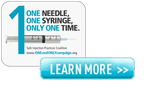
My sincere thanks to the Denver Post’s David Osher and Christopher Olinger for their in-depth piece on drug diversion, reporting and treatment on 4/24/2016.
http://www.denverpost.com/news/ci_29806013/drug-addicted-dangerous-and-licensed-operating-room
In this piece, spurred on by the maelstrom of events which surrounded the arrest of a surgical tech from Swedish Medical Center the previous month, Osher and Olinger point out the simple truth that hospitals do not all prescribe to the same standard of safety and precaution when a drug diversion occurs. It was made clear that simply not reporting a theft, leaves open the possibility of hiring of these drug diverting healthcare workers at other facilities and allow them to continue their diverting ways. These reporters did an extensive job in reviewing state health department, licensing board and police records. And the results were unbelievable.
Well, they might be unbelievable to the general public, those not privy to the behind the scenes details and information. But since my involvement in the drug diversion scene starting in 2009, this, unfortunately, has become the norm. Public disclosures of diversion cases and potential harm are the exception, not the rule. The privacy of the perpetrator becomes more important than the safety of patients and fellow employees.
What do we do? This is the question healthcare facilities continue to ask when a diversion case is discovered. Do we report to the police? Do we notify the DEA? Can’t we just inform the state health department? What if the healthcare diverter is addicted? Can’t they just get treatment?
In the past 6 years, in Colorado alone, there were 416 state reports of missing or stolen drugs from hospitals. Remember, this is only taking into account the reports. It is impossible to know how many thefts go unreported. Of 222 cases of a confirmed diversion, only 123 were reported to police and only 70 showed a paper trail which led to the DEA.
In Colorado, the nursing board allows for treatment for drug-addicted nurses, but show only about 60% completing the treatment.
When the decisions of what to do are left to the individual hospitals, it has been proven, they are not always able to take the best course of action for the employee, the patients or fellow employees with whom they may come in contact with on any given day. And because the decision about what to do is left to interpretation, other hospitals and hiring professionals are left at a loss not being able to retrieve true and accurate information about a potential employee.
That is why once again I bring to the table the idea of mandatory reporting standards for all diversion cases and a national database. A unified approach must be implemented bringing together licensing boards, state health departments, hospitals and local and federal law enforcement so the reporting leaves nothing to chance. So each hospital has the same responsibility to keep their patients safe. So drug diversion reporting becomes the law and is enforced as such. So law enforcement works with healthcare facilities for greater transparency. And for the chance to truly encourage recovery for those struggling with drug addiction and the hope of a second chance.






Leave a comment